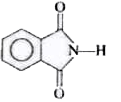Which of the following compounds can form H-bonding with each other ?
CH3COOHandH2O
Phenol and CH4
CHF3 and acetone
PH3 and HF
The correct Answer is:A
To determine which compounds can form hydrogen bonding with each other, we need to follow these steps:
Step 1: Understand Hydrogen Bonding
Hydrogen bonding occurs when hydrogen is covalently bonded to highly electronegative atoms such as nitrogen (N), oxygen (O), or fluorine (F). These electronegative atoms must also have lone pairs of electrons to accept the hydrogen bond.
Hint: Look for hydrogen atoms bonded to N, O, or F in the compounds.
Step 2: Analyze Each Compound
Let’s analyze the given compounds one by one:
1. Acetic Acid (CH3COOH) and Water (H2O):
- Acetic acid has an -OH group where hydrogen is bonded to oxygen.
- Water also has hydrogen atoms bonded to oxygen.
- Both have the necessary electronegative atom (O) and can form hydrogen bonds with each other.
Hint: Check for -OH groups in the compounds.
2. Phenol (C6H5OH) and Methane (CH4):
- Phenol has an -OH group, allowing it to form hydrogen bonds.
- Methane has hydrogen atoms bonded to carbon, which is not electronegative enough to form hydrogen bonds.
- Therefore, phenol can form hydrogen bonds, but methane cannot.
Hint: Identify the presence of -OH in one compound and the absence of electronegative bonding in another.
3. Acetone (CH3COCH3) and Trifluoromethane (CHF3):
- Acetone has a carbonyl group (C=O) but does not have hydrogen bonded to O, N, or F.
- In CHF3, the hydrogen is bonded to carbon, which is not electronegative enough.
- Thus, neither can form hydrogen bonds with each other.
Hint: Look for the presence of a carbonyl group without an attached hydrogen to O, N, or F.
4. Phosphine (PH3):
- Phosphine has hydrogen atoms bonded to phosphorus, which is not as electronegative as N, O, or F.
- It cannot participate in hydrogen bonding due to the lack of a suitable electronegative atom.
Hint: Remember that hydrogen must be bonded to highly electronegative atoms to form hydrogen bonds.
Step 3: Conclusion
From the analysis:
- Only Acetic Acid (CH3COOH) and Water (H2O) can form hydrogen bonds with each other.
- Other combinations either lack the necessary electronegative atoms or have hydrogen bonded to less electronegative atoms.
Final Answer: Acetic Acid (CH3COOH) and Water (H2O) can form hydrogen bonding with each other.
Hydrogen bonding occurs when hydrogen is covalently bonded to highly electronegative atoms such as nitrogen (N), oxygen (O), or fluorine (F). These electronegative atoms must also have lone pairs of electrons to accept the hydrogen bond.
Let’s analyze the given compounds one by one:
- Acetic acid has an -OH group where hydrogen is bonded to oxygen.
- Water also has hydrogen atoms bonded to oxygen.
- Both have the necessary electronegative atom (O) and can form hydrogen bonds with each other.
- Phenol has an -OH group, allowing it to form hydrogen bonds.
- Methane has hydrogen atoms bonded to carbon, which is not electronegative enough to form hydrogen bonds.
- Therefore, phenol can form hydrogen bonds, but methane cannot.
- Acetone has a carbonyl group (C=O) but does not have hydrogen bonded to O, N, or F.
- In CHF3, the hydrogen is bonded to carbon, which is not electronegative enough.
- Thus, neither can form hydrogen bonds with each other.
- Phosphine has hydrogen atoms bonded to phosphorus, which is not as electronegative as N, O, or F.
- It cannot participate in hydrogen bonding due to the lack of a suitable electronegative atom.
From the analysis:
- Only Acetic Acid (CH3COOH) and Water (H2O) can form hydrogen bonds with each other.
- Other combinations either lack the necessary electronegative atoms or have hydrogen bonded to less electronegative atoms.
Topper's Solved these Questions
- CHEMICAL BONDING (BASIC)BOOK - VK JAISWAL ENGLISHCHAPTER - CHEMICAL BONDING (BASIC)EXERCISE - Level 2
62 Videos
- CHEMICAL BONDING (BASIC)BOOK - VK JAISWAL ENGLISHCHAPTER - CHEMICAL BONDING (BASIC)EXERCISE - Level 3 (Passive 1)
6 Videos
- CHEMICAL BONDING (ADVANCED)BOOK - VK JAISWAL ENGLISHCHAPTER - CHEMICAL BONDING (ADVANCED)EXERCISE - SUBJECTIVE PROBLEMS
64 Videos
- CO-ORDINATION COMPOUNDSBOOK - VK JAISWAL ENGLISHCHAPTER - CO-ORDINATION COMPOUNDSEXERCISE - LEVEL 2
144 Videos
Similar Questions
Knowledge Check
Which of the following compounds will form alcohol with NaNO2/HCl ?
A B
B CCH3−CH2−NH2DAll of these
CCH3−CH2−NH2DAll of theseWhich of the following compounds can react with base to form salt?
A B
B C
C D
D
Which of the following compound can form during the free radical chlorination of methane?
View SolutionWhich of the following compounds can form alcohol with NaNO2/HCl?
View SolutionIn which of the following compounds , back bonding is possible
View SolutionWhich of the following compounds has cis configuration at each double bond ?
View SolutionWhich of the following compounds prossesses the C−H bonds with the lowest bond dissociation energy?
View SolutionWhich of the following compounds has the smallest bond angle?
View Solution